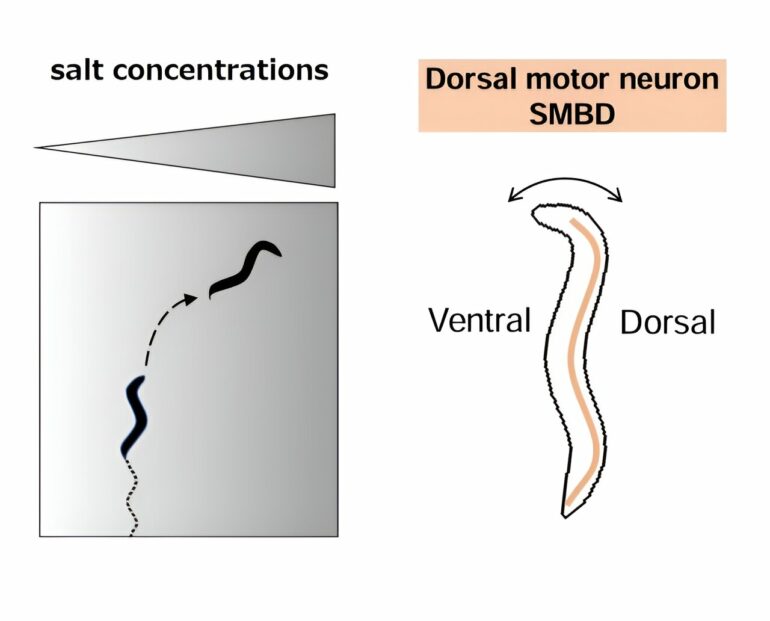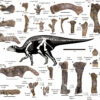Joint research led by Ayaka Matsumoto and Yuichi Iino of the University of Tokyo demonstrates that temporal decrease in salt concentration leads to the activation of the neck motor neuron of roundworms, but only in a specific phase of its activity.
The activation adjusts the roundworm’s trajectory toward higher salt concentrations. The finding pinpoints the neural mechanism by which roundworms integrate sensory and motor information, a first step toward understanding the neural mechanisms of navigation in more complex animals. The findings were published in the journal Proceedings of the National Academy of Sciences.
It took human civilization thousands of years of concentrated effort to build (somewhat) self-driving vehicles. Yet even the simplest animals can integrate sensory information about their environments and adjust their movements accordingly. As such, the integration of sensory information and motor control is one of the most fundamental questions a biologist can tackle.
This is precisely what the research team decided to undertake using a species of roundworm called Caenorhabditis elegans. C. elegans’ total of 302 neurons are completely mapped, making it possible to manipulate and observe the effects of a single neuron.
“Roundworms travel by curving slowly toward regions with higher salt concentrations,” explains Matsumoto, the first author of the paper. “To control this curving behavior, roundworms need to detect the salt concentrations perpendicular to the path of their movements. However, they only have a single point ‘sensor,’ which makes it impossible for them to detect salt concentrations in space. Therefore, roundworms must be processing temporal changes in salt concentrations to recognize the preferred side.”
To investigate this hypothesis, the team used a “head-swing chip,” a tiny device that allows the worms to move their heads freely. Then, the researchers observed how the animals “clamped” in this device reacted to increasing or decreasing salt concentrations.
Roundworms move around by contracting the muscles that run along the longer axis of their bodies. As a result, their heads swing back and forth between the direction of their stomachs (ventral side) and backs (dorsal side), eventually curving more toward the direction they intend to go.
Here, the researchers found that decreasing salt concentrations activated the dorsal neck neuron SMBD only in a specific phase of its activity, and its activity strongly correlated with neck swings. The activation of SMBD in response to a decrease in salt concentration corresponded to the timing when the neck was bending toward the ventral side. This suggested that SMBD detects the lower salt concentrations on the ventral side of the body.
Furthermore, the team revealed that artificial activation of SMBD during neck bending toward the ventral side made subsequent ventral neck bending shallower. Combining their results, the team inferred that SMBD plays a role not only in detecting changes in salt concentrations but also in suppressing neck bending toward the side with lower concentrations. It thus directs the worm toward higher salt concentrations.
“Even though we found that SMBD neuron integrates sensory and motor information, the molecular mechanisms of integration remain unknown,” Matsumoto says, pointing to future research.
“Therefore, we are interested in what is going on inside the SMBD neuron while it senses salt concentration changes and neck movements. Also, we would love to look at the activity of all the neurons in the brain at the same time during navigation.”
More information:
Neuronal sensorimotor integration guiding salt concentration navigation in Caenorhabditis elegans, Proceedings of the National Academy of Sciences (2024). DOI: 10.1073/pnas.2310735121. doi.org/10.1073/pnas.2310735121
Provided by
University of Tokyo
Citation:
Follow the salt: Connecting salt concentrations and motion in roundworms (2024, January 22)



